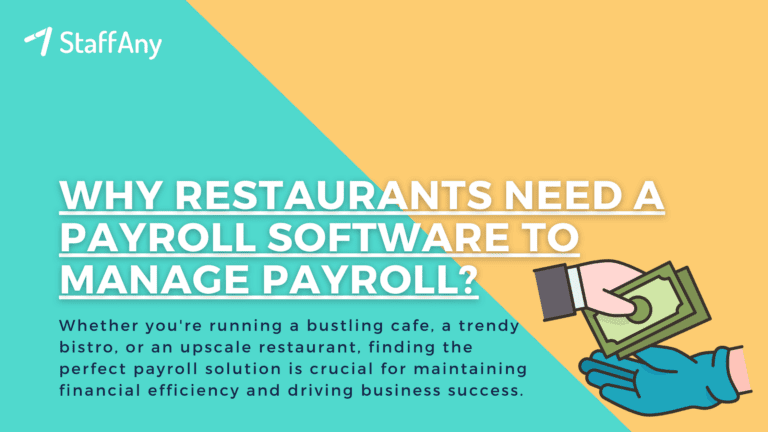In the world of dining and hospitality, the relationship between restaurant quality and customer satisfaction is a topic of paramount importance. Delving into this intricate connection unveils a captivating interplay of factors that determine the success and longevity of dining establishments. To truly appreciate this relationship, we must first define and understand what constitutes restaurant quality and customer satisfaction.
In this article, we’ll delve into the intricate relationship between restaurant quality and customer satisfaction. To begin, let’s define these two crucial elements!
What is the Meaning of Restaurant Quality and Customer Satisfaction?
Understanding the intricate relationship between restaurant quality and customer satisfaction is essential for anyone in the hospitality industry. To delve deeper into this connection, let’s first break down what each of these terms means.
Restaurant Quality
Restaurant quality encompasses a broad spectrum of elements that collectively define the overall experience a diner has at an eatery. It goes beyond merely serving good food; it encapsulates the entire ambience, service, and attention to detail. Restaurant quality involves factors such as the quality of ingredients used in culinary preparations, the expertise of chefs, the presentation of dishes, and the cleanliness of the dining area. It’s about creating a memorable and delightful dining experience that leaves a lasting impression on patrons.
Customer Satisfaction
Customer satisfaction is the pivotal metric by which the success of a restaurant is measured. It is the gratification and contentment that diners experience during and after their visit. It encompasses everything from the taste and presentation of food to the responsiveness of the staff and the overall atmosphere of the establishment. A satisfied customer not only returns but also becomes an advocate, spreading positive word-of-mouth and contributing to the restaurant’s reputation.
Read more: 11 Effective Restaurant Risk Management Strategies
Why is Quality Important in Restaurants?
Quality in restaurants extends far beyond the mere act of serving meals. It encompasses a myriad of factors that together define the very essence of dining. Let’s explore five key aspects that underscore the significance of quality in the culinary world.
1. First Impressions Matter
First impressions are pivotal in the restaurant industry because they set the stage for the entire dining experience. A welcoming atmosphere with well-groomed and polite staff can instantly put diners at ease, making them more receptive to enjoying their meal. Conversely, a negative first impression can be challenging to overcome, as it may colour the entire perception of the restaurant.
2. Building Trust and Loyalty
Consistency in delivering quality builds trust and loyalty among customers over time. When diners know they can consistently expect a high standard of food and service, they are more likely to return for repeat visits. This trust leads to customer loyalty, as patrons become not just occasional visitors but advocates who recommend the restaurant to friends and family.
3. Positive Reviews and Reputation
In today’s digital age, positive customer reviews and ratings can significantly impact a restaurant’s success. When customers have had a great dining experience, they are more likely to leave positive reviews on platforms like TripAdvisor or Yelp. These positive reviews not only attract new customers but also contribute to an improved online reputation, which is crucial for drawing in potential diners.
4. Differentiation in a Competitive Market
The restaurant industry is fiercely competitive, with new establishments continually entering the market. Quality serves as a powerful differentiator in this landscape. Restaurants that consistently provide excellent food and service stand out amidst the competition. In a world where customers have numerous options, being recognised for quality sets a restaurant apart and can be the deciding factor for diners when choosing where to dine.
5. Increased Revenue
The pursuit of restaurant quality ultimately leads to increased revenue. Satisfied customers are not only more likely to return but also to spend more during their visit. They are more inclined to explore additional menu items, order desserts, and indulge in beverages. Furthermore, satisfied customers often become ambassadors for the restaurant, bringing friends and family along for dining experiences, thereby expanding the customer base and revenue potential.
Ways Restaurants Can Increase Customer Satisfaction
Customer satisfaction is the lifeblood of any successful restaurant. To achieve and maintain high levels of customer satisfaction, restaurants must adopt strategies and practices that go beyond just serving great food. Here, we’ll discuss five crucial approaches that can make a substantial difference in enhancing the overall dining experience.
1. Training and Development
Investing in comprehensive training and development programs for restaurant staff is essential. Well-trained employees not only ensure smooth and efficient service but also create a welcoming and engaging atmosphere for diners. Continuous training empowers staff to handle various customer needs, from recommending dishes to addressing dietary restrictions or allergies, ultimately contributing to a memorable dining experience.
2. Menu Innovation
Menu innovation is a dynamic process that keeps customers excited about returning to your restaurant. It involves not only introducing new dishes but also revamping existing ones to stay in line with changing culinary trends. By offering seasonal specials and accommodating diverse dietary preferences, restaurants can cater to a broader range of tastes and preferences, enticing customers to explore new culinary experiences.
3. Quality Ingredients
The importance of quality ingredients cannot be overstated in the pursuit of customer satisfaction. Sourcing fresh, locally-sourced, and sustainable ingredients not only enhances the flavour and nutritional value of dishes but also demonstrates a commitment to ethical and environmentally-conscious dining. Restaurants that prioritise ingredient quality are likely to attract discerning customers who appreciate the integrity behind each meal.
4. Attention to Detail
Attention to detail permeates every aspect of the dining experience, creating a lasting impression on customers. Beyond the culinary creations, it includes aspects such as the arrangement of table settings, the cleanliness of restrooms, and the overall ambiance. An aesthetically pleasing presentation and a meticulously maintained environment contribute to the overall enjoyment of the meal and elevate the restaurant’s reputation.
5. Feedback and Improvement
Actively seeking and valuing customer feedback is an ongoing process that demonstrates a commitment to excellence. By regularly assessing customer comments, both positive and negative, restaurants can identify areas for improvement. This feedback-driven approach allows establishments to adapt and evolve to meet the changing expectations and preferences of their clientele, ensuring that each visit is better than the last.
Read more: Restaurant Management Plan: Benefits & Development
The relationship between restaurant quality and customer satisfaction is a symbiotic one, where each aspect nourishes the other. Quality in restaurants isn’t just about serving great food; it encompasses every facet of the dining experience. When restaurants prioritise quality, they create an environment where customer satisfaction thrives, leading to success and growth in the fiercely competitive hospitality industry.
For restaurants seeking to enhance their quality and customer satisfaction, consider exploring StaffAny’s workforce business services. Our solutions are designed to empower your managers by streamlining operations and automating routine tasks, freeing up their valuable time to focus on coaching and contributing to your business’s growth. Additionally, our performance notifications and employee engagement features inspire top performance by providing automatic feedback on work performance, both positive and corrective. With StaffAny, you can take your restaurant to new heights of excellence and customer satisfaction. Contact us today to embark on a journey of culinary success!











